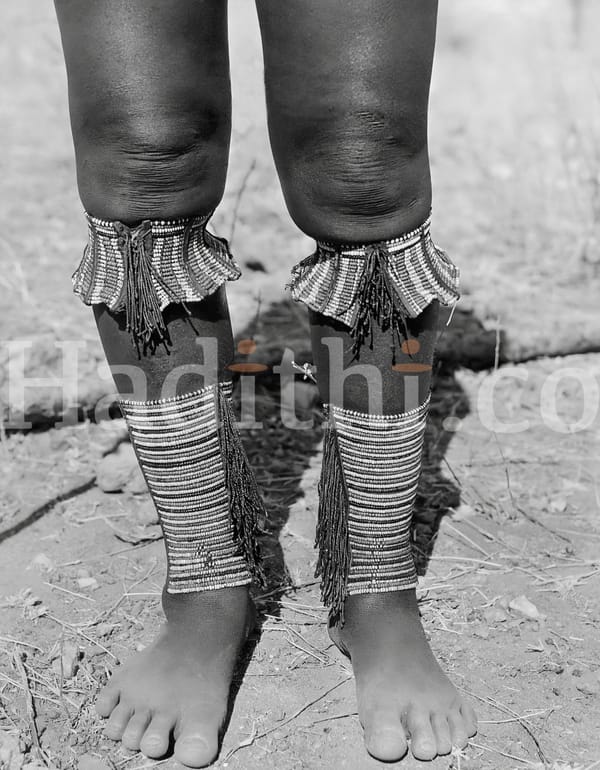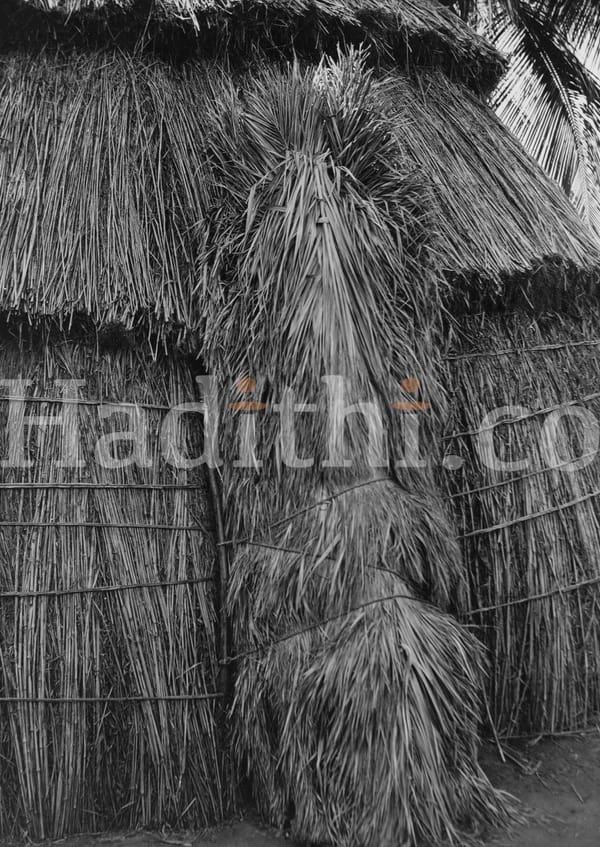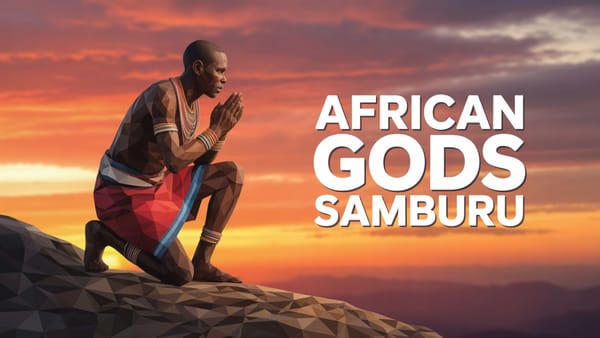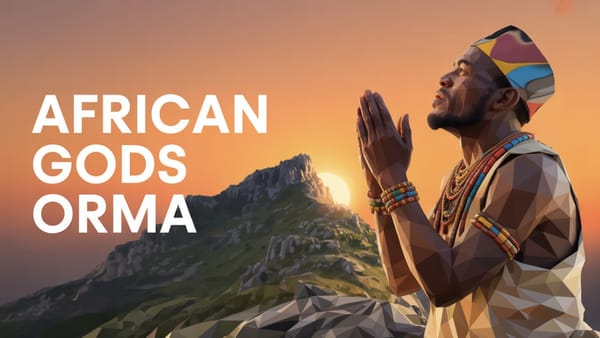African Gods: The Gusii Tribe of Kenya
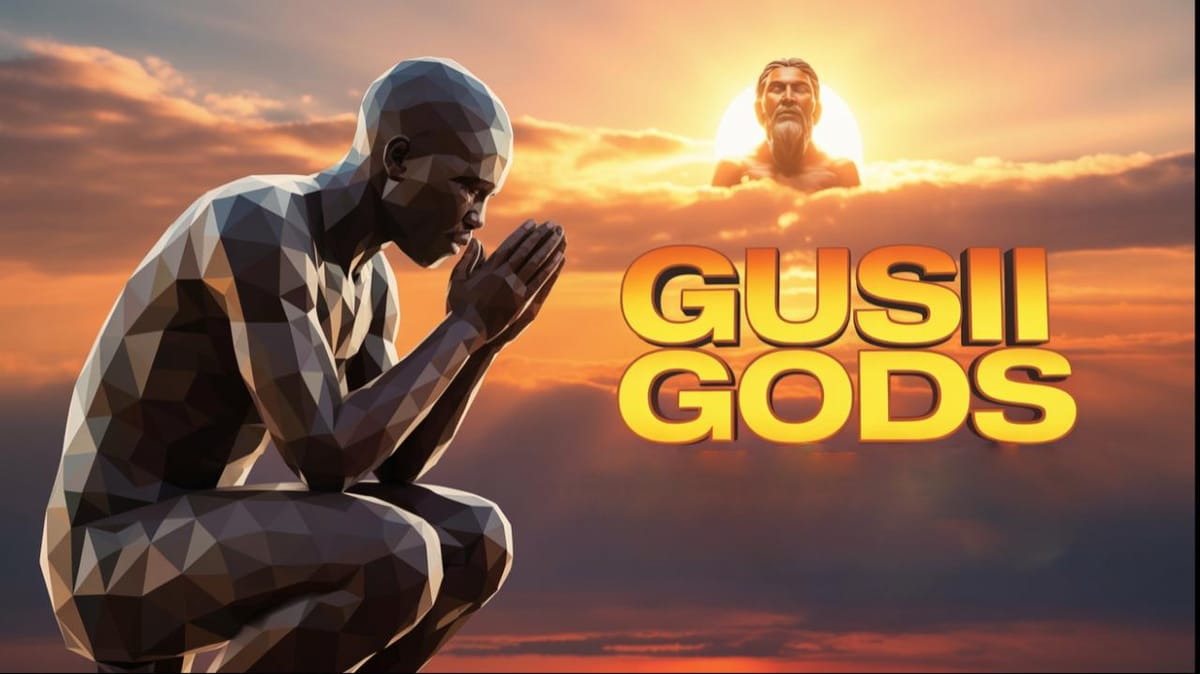
The Abagusii, also known as the Kisii or Gusii, are a prominent Bantu ethnic group indigenous to Kenya's Kisii and Nyamira counties. With a population exceeding 2.7 million, they represent the 7th largest ethnic group in the country. This article explores the intricate belief system surrounding their supreme being, Engoro, alongside their cultural practices, rituals, and the roles of diviners and medicine men in their community.
Who are the Gusii?
The Gusii are believed to have originated from Tanzania in the 17th century, migrating to the Kisii highlands of western Kenya. Their name was derived from their patriarch, Mogusii. Mogusii, who lived till the late sixteenth century, was the great great great grandson of a leader known as Kintu who was accredited for having being the one who led migration of the first bantu group from their mythical location “Misri” The Abagusii speak Ekegusii, a Bantu language rich in proverbs and idiomatic expressions. They are known for their soapstone carvings and agricultural practices, particularly in banana farming. The Gusii maintain a strong sense of community and cultural heritage.
The Supreme Being: Engoro
Name and Attributes
The Gusii believed in one supreme being, Engoro, who governed the universe and oversaw all living things. Engoro was seen as the world's creator, responsible for life, prosperity, and the natural order. He possessed both non-communicable attributes—such as being self-existent, invisible, and immutable—and communicable qualities like compassion and kindness.
How They Address God
The Abagusii addressed Engoro using various anthropomorphic images, such as:
● Father, who was locally known as (tata)
● Community elder who was locally known as (omokumi)
● Healer who was locally known as (omogwenia)
● A friend who was locally known (omosani)
● Blacksmith, locally known as (Omoturi)
These representations made Engoro more relatable, emphasizing his role as a provider, protector, and guide.
Places of Worship and Directions
The Gusii believed that the rising sun, “Erioba,” was Engoros' big eye, which was a significant part of the traditional morning ritual. The Gusii traditionally worshipped in designated places, often within their homesteads or at sacred sites like hills. While worship occurred in various directions, some specific rituals involved facing the sky, symbolizing their connection to Engoro.
Ancestor Worship
The Gusii hold a unique perspective on ancestor spirits locally known as “Ebirecha”, believing in the survival of all ancestors. They performed rituals to appease these spirits, as neglecting them often led to misfortune. Ancestors were viewed as intermediaries between the living and Engoro, and prayers were often directed through them.
How Ancestral Spirits Were Viewed Among the Gusii People
1. Their Nature and Belief
Collective and Individual nature and belief of ancestral spirits
● Collective Entity: The Gusii people viewed ancestral spirits as a unified force representing the collective heritage of their community.
● Individual Spirits: Each spirit was also considered a specific individual, often linked to deceased family members, embodying their characteristics and values.
Ancestors Displeasure
● Causes of Displeasure: Ancestral spirits were believed to express their dissatisfaction through various forms of misfortune. This would include personal and communal hardships.
● Consequences following ancestors' displeasure: Illness, death, and crop failures were all attributed to the displeasure of these spirits, emphasizing the connection between the living and their ancestors.
Propitiation rituals for ancestors
● Conditional for Rituals: Propitiation rituals were not performed lightly. They were reserved for times when there was clear evidence of the ancestors' displeasure
2. Manifestations of Displeasure by ancestors
Disease and Death
● Health Issues: Displeased ancestral spirits were thought to inflict diseases on individuals and even livestock, reflecting their power over the physical well-being of the living.
Crop Failure
● Agricultural Impact: Poor harvests and barren fields were often seen as signs of ancestral discontent, impacting the community’s sustenance and economic stability.
Natural Disasters
● Attribution of Calamities: Traditional beliefs linked events such as lightning strikes, suicides, or mental health crises to the actions of displeased ancestors, illustrating their perceived control over both natural and social realms.
3. Significance and Role of the Ancestors
Moral Authority
● Influence on Behavior: Ancestral spirits served as a moral compass within the community, guiding behavior and ethical standards. Their presence reinforced societal values, particularly within the family unit.
Social Control
● Discouragement of Misconduct: The belief in ancestral spirits acted as a mechanism for social control. It discouraged behaviors deemed inappropriate and promoted adherence to cultural traditions, thus maintaining social order.
Sacrificial Offerings
Sacrifices, typically involving sheep or goats, were made to seek forgiveness or reconciliation. These communal events involved religious leaders and cultural guardians, reinforcing the community's social fabric.
Diviners and Their Role
Becoming a Diviner
Diviners, known as abaragori, often emerged from familial legacies or through visions. Typically, women would diagnose misfortunes and prescribe remedies, which would include sacrifices to appease displeased spirits.Among the Gusii of Kenya, divination practices play a significant role in addressing health and social issues.
Tools Used in Divination
- Divining Boards (Mbofua):
○ These boards were often intricately designed and used as a surface for casting symbols or items. The patterns and arrangements that emerged were interpreted by the diviner.
- Pebbles (Ga'gi):
○ Pebbles were commonly used as divination tools. They would be cast onto the ground or arranged in specific formations to glean insights into various situations, particularly health-related concerns.
- Gourds (Ajawu):
○ Gourds were utilized to hold sacred items or substances. They were also used in rituals and ceremonies to invoke spiritual guidance during the divination process.
Role of Diviners (Omoragori)
● Identification of Health Problems:
○ Omoragori were skilled practitioners who interpreted the signs and symbols revealed through the divination process. They played a crucial role in diagnosing ailments that may not be visible through conventional means.
● Prescribing Solutions:
○ After identifying the issue, diviners would recommend remedies or interventions. These would include herbal treatments, rituals, or lifestyle changes aimed at restoring health and balance.
Cultural Significance
● Divination among the Gusii was not merely about predicting the future; it was deeply embedded in their cultural practices, beliefs, and social structures. The integration of divination into daily life reflects the community's reliance on spiritual and ancestral guidance in navigating challenges, particularly in health matters.
Types of Healers
The Gusii community recognized several types of healers:
● Abanyamoriogi, the herbalist who created medicinal mixtures.
● Ababari: the Indigenous surgeons skilled in setting fractures and performing minor surgeries.
● Abanyamosira: Sorcerers who protected people against witchcraft.
Spiritual Rituals and Practices
The Gusii engaged in various spiritual rituals, which played a crucial role in their cultural identity. These included:
● Healing ceremonies: Conducted by medicine men using natural remedies.
● Cleansing rituals: Performed to remove curses or negative energies.
● Rites of passage: Marking significant life events, such as birth, marriage, and death.
Tools and Mediums for Prayer
When praying, the Gusii used natural elements such as water, earth, and fire, believing these mediums facilitate communication with Engoro and ancestral spirits. They may also employ traditional artifacts during rituals to enhance their spiritual connection.
Conclusion
The belief system of the Gusii tribe is a rich tapestry woven with the threads of spirituality, community, and cultural heritage. Through their worship of Engoro, ancestor reverence, and the crucial roles of diviners and medicine men, the Gusii maintain a profound connection to their identity, history, and the world around them. This intricate interplay of beliefs and practices not only sustains their cultural integrity but also serves as a vital aspect of their everyday life.

